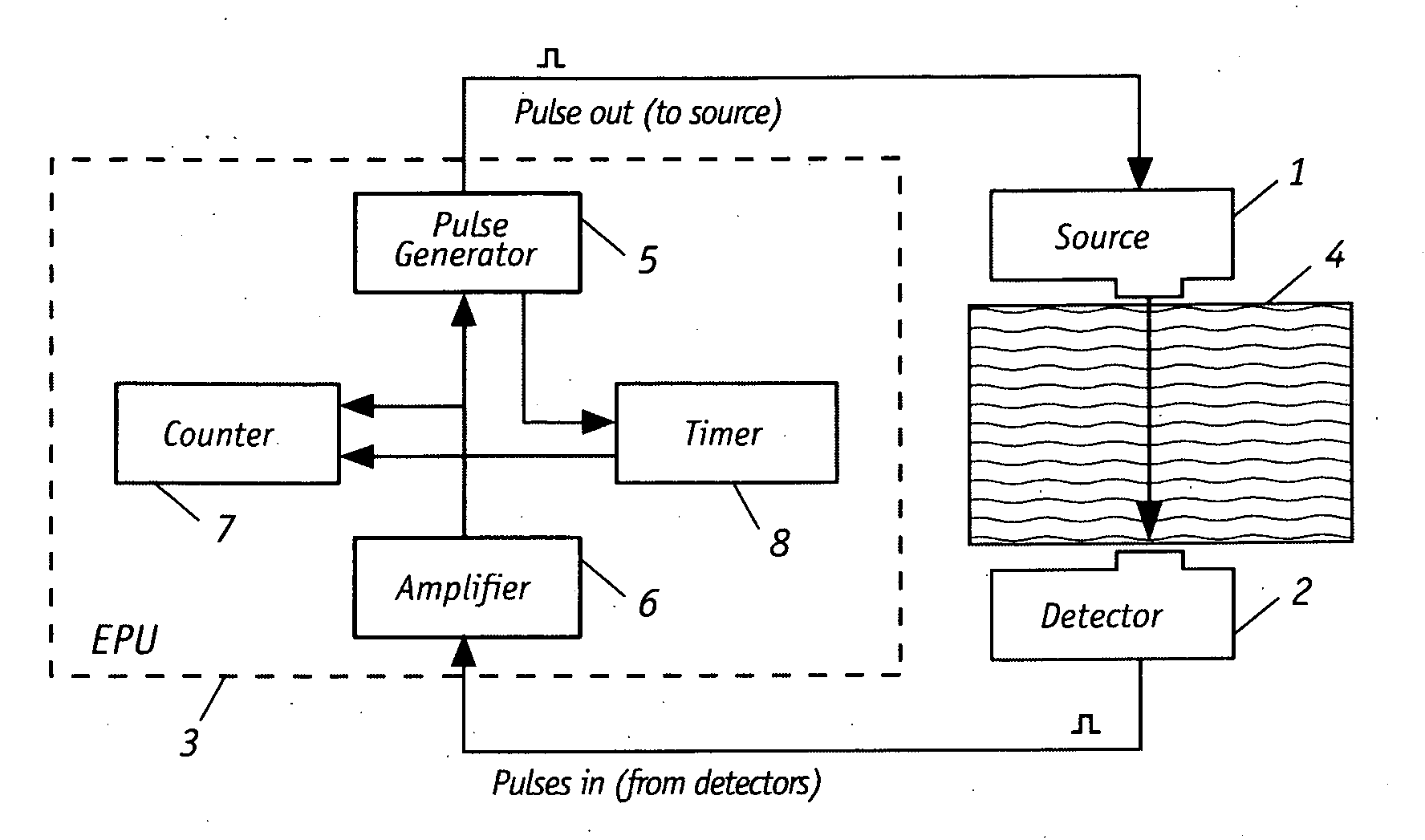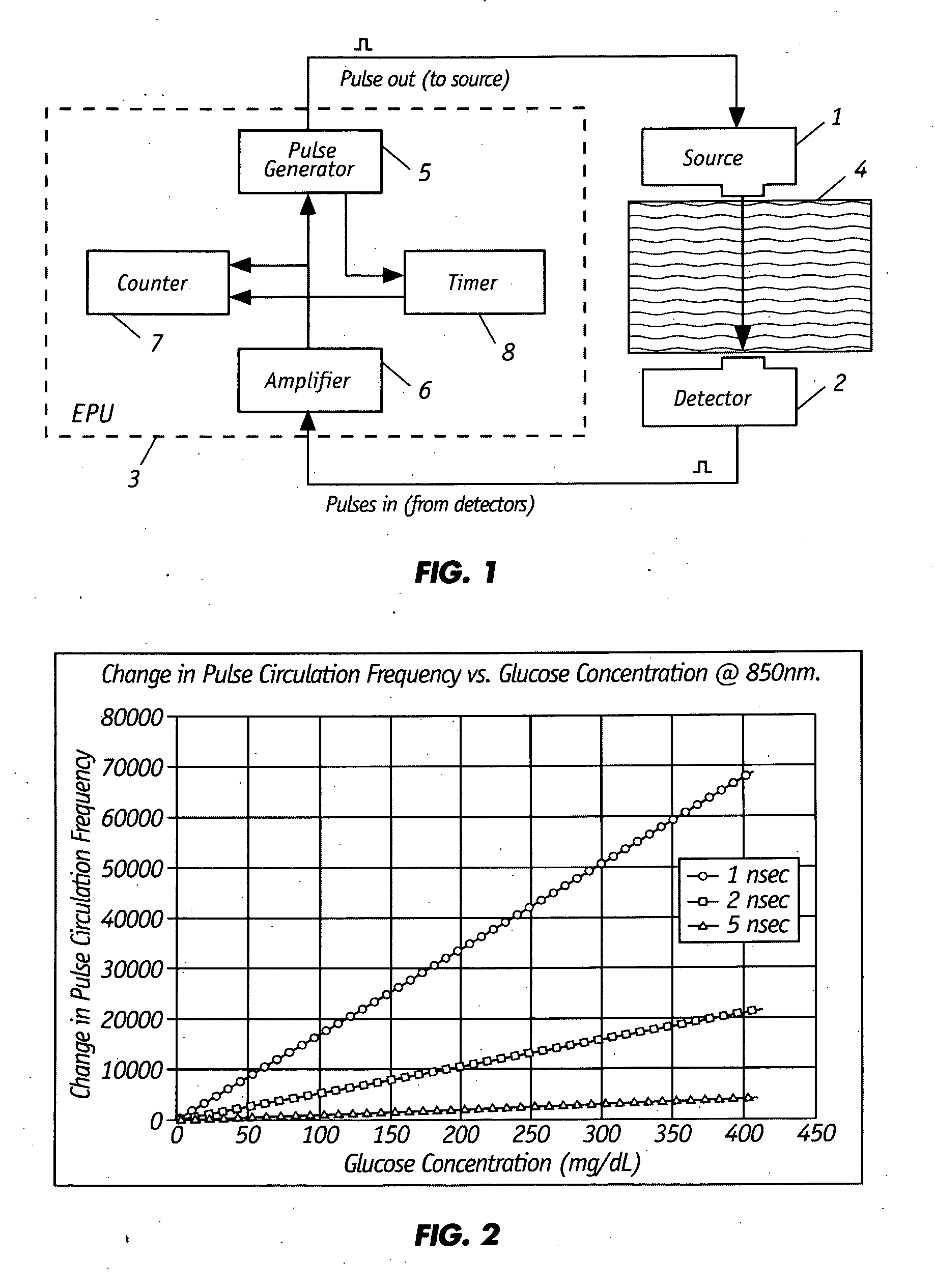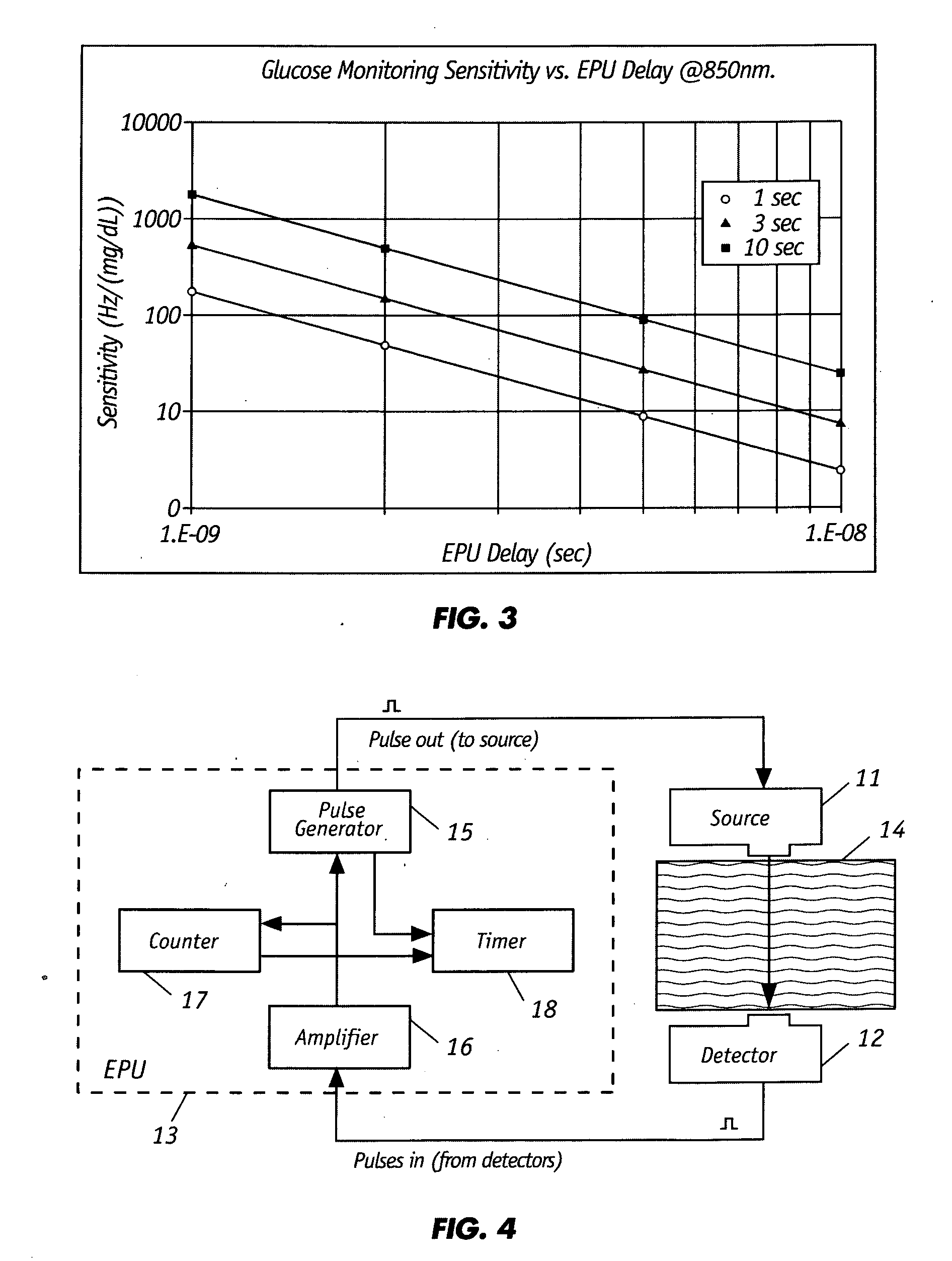Optical non-invasive blood monitoring system and method
a blood monitoring system and non-invasive technology, applied in the field of optical non-invasive blood monitoring system and method, can solve the problems of severe damage to vital organs, insufficient insulin production or response of the body, and the existence of no cure for diabetes
- Summary
- Abstract
- Description
- Claims
- Application Information
AI Technical Summary
Benefits of technology
Problems solved by technology
Method used
Image
Examples
Embodiment Construction
[0043]As shown in FIG. 1, the glucose monitoring device includes an optical or light source of electromagnetic radiation 1 and detector 2 which, are connected to an electronic processing unit (EPU) 3. EPU 3, which includes a pulse generator 5, amplifier 6, counter 7 and timer 8, is capable of generating, amplifying and counting electronic pulses and monitoring time precisely. Source 1 and detector 2 are preferably disposed on opposite sides of glucose-containing tissue 4, which is to be monitored.
[0044]Optical source 1 can comprise any suitable conventional source such as, for sample, a laser, a laser diode, a light emitting diode (LED), or some other type of light emitting device that is capable of generating light in a relatively narrow wavelength band in a high frequency pulse regime. The intensity should be sufficient to transmit through tissue being monitored but the intensity and energy levels of the radiation must not be hazardous to the tissue. The radiation is preferably wi...
PUM
 Login to View More
Login to View More Abstract
Description
Claims
Application Information
 Login to View More
Login to View More - R&D
- Intellectual Property
- Life Sciences
- Materials
- Tech Scout
- Unparalleled Data Quality
- Higher Quality Content
- 60% Fewer Hallucinations
Browse by: Latest US Patents, China's latest patents, Technical Efficacy Thesaurus, Application Domain, Technology Topic, Popular Technical Reports.
© 2025 PatSnap. All rights reserved.Legal|Privacy policy|Modern Slavery Act Transparency Statement|Sitemap|About US| Contact US: help@patsnap.com



